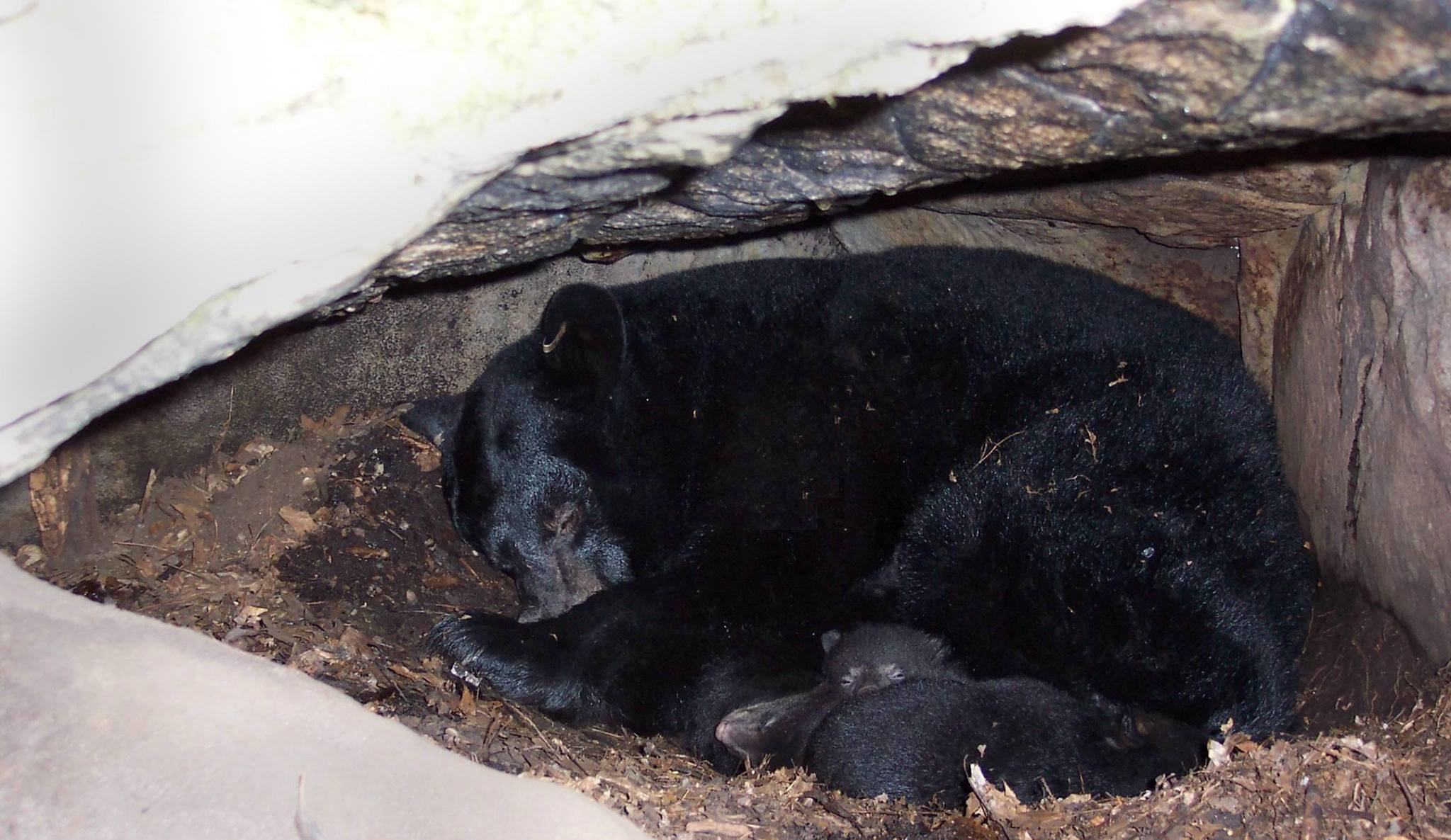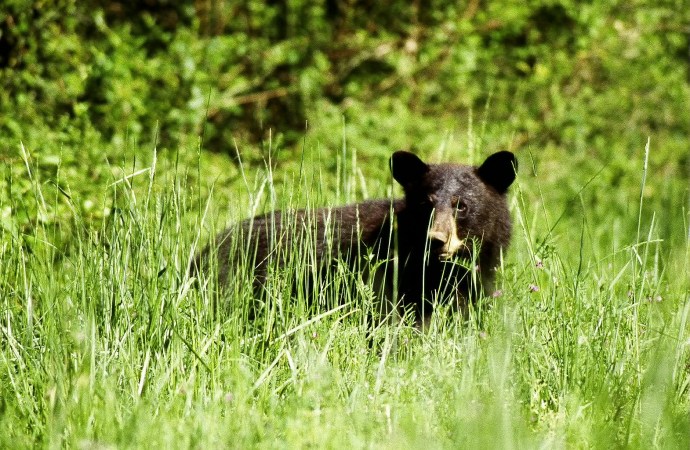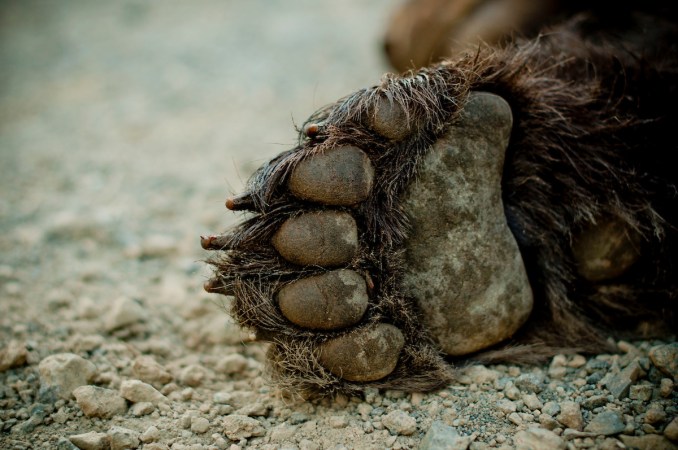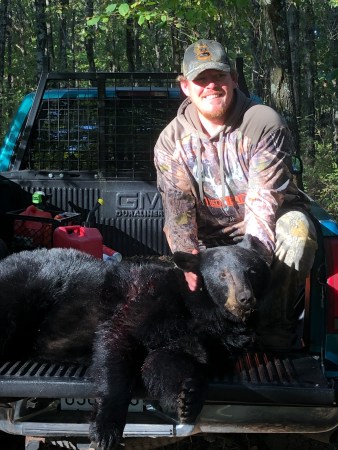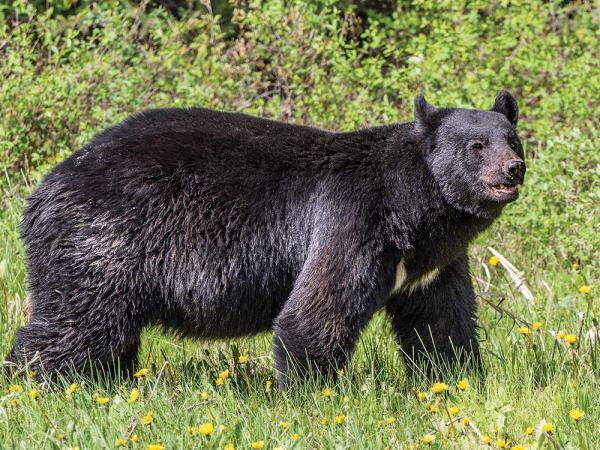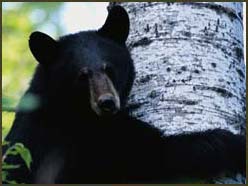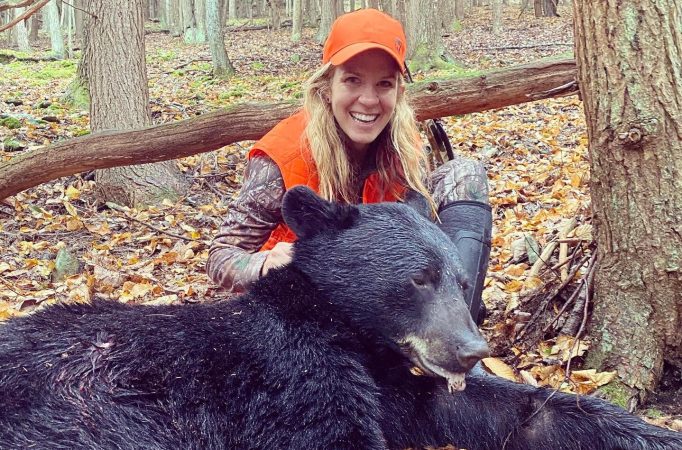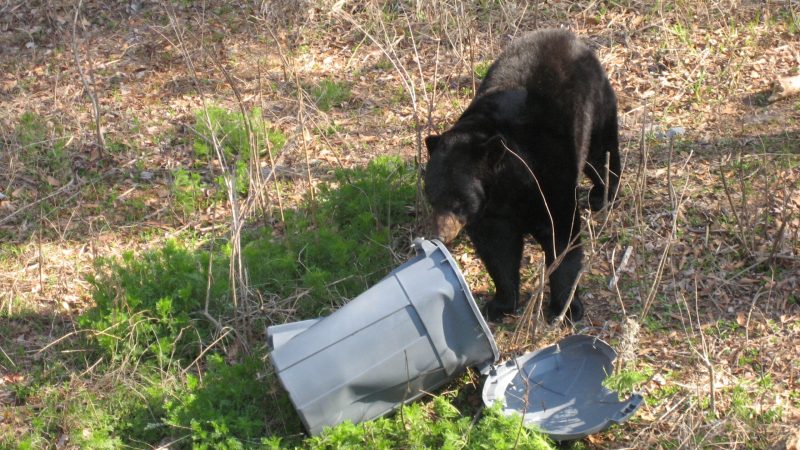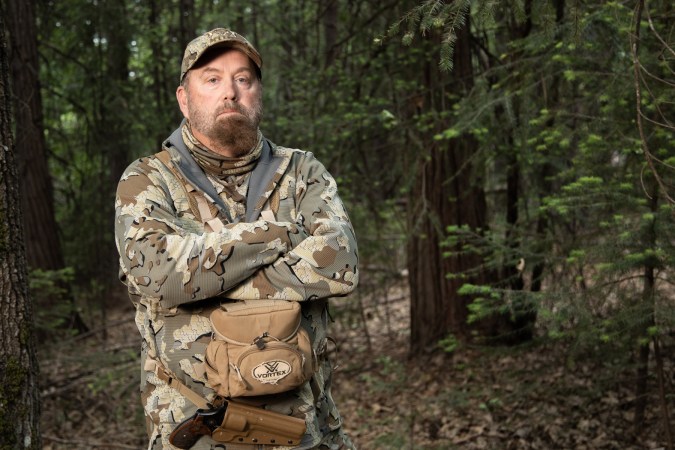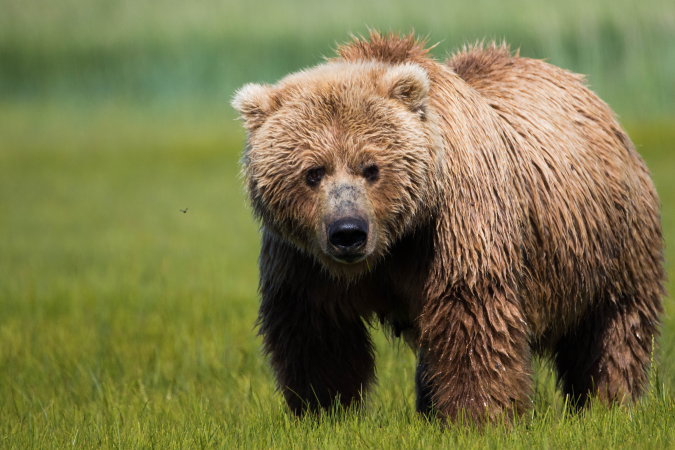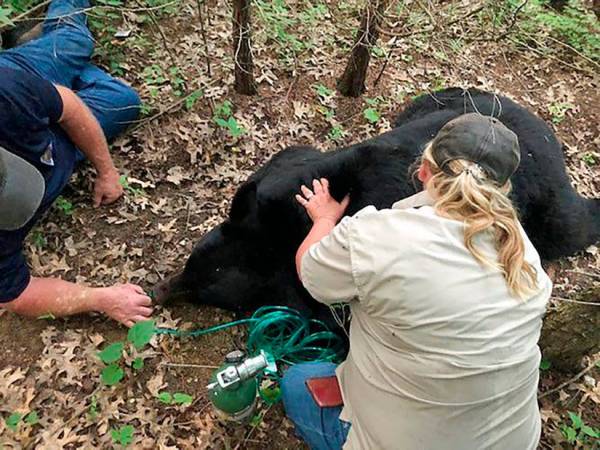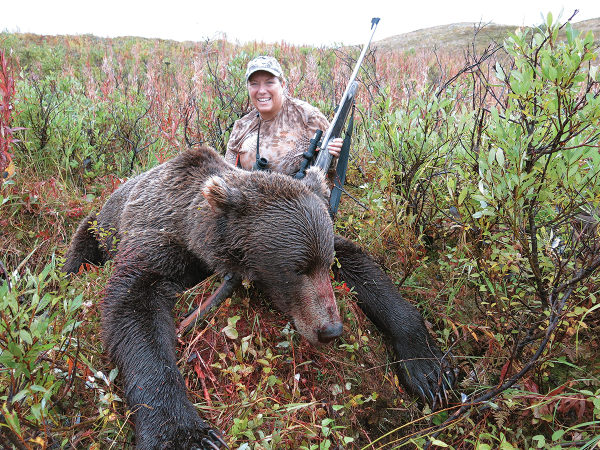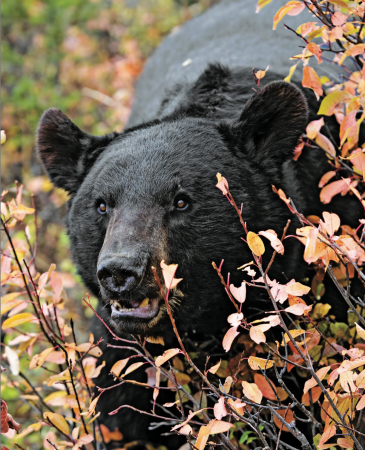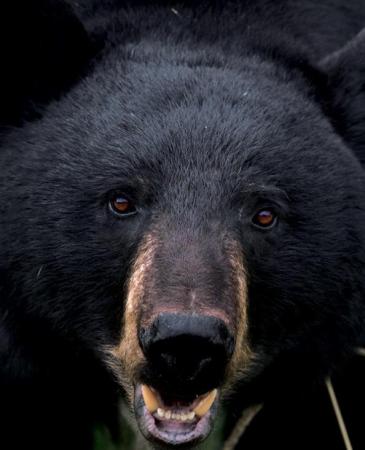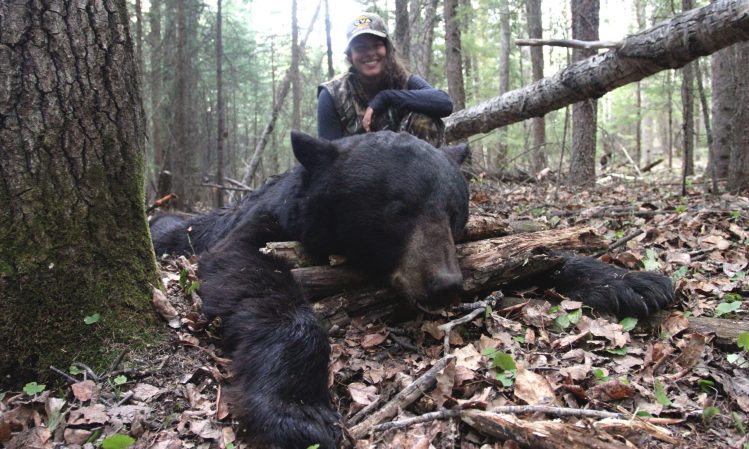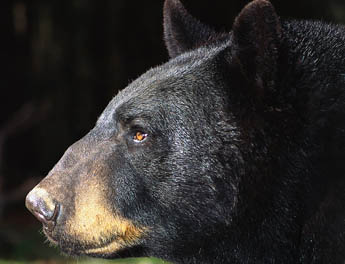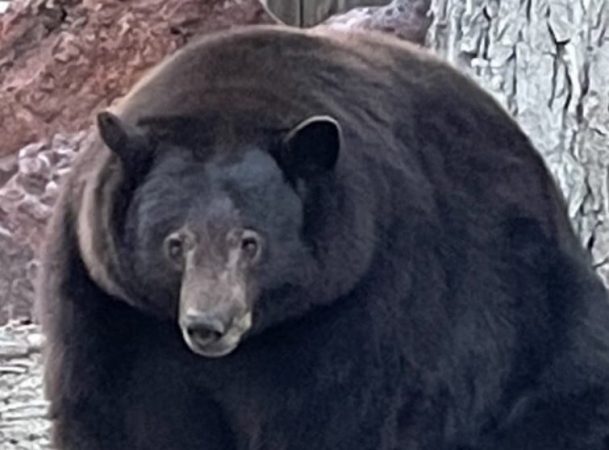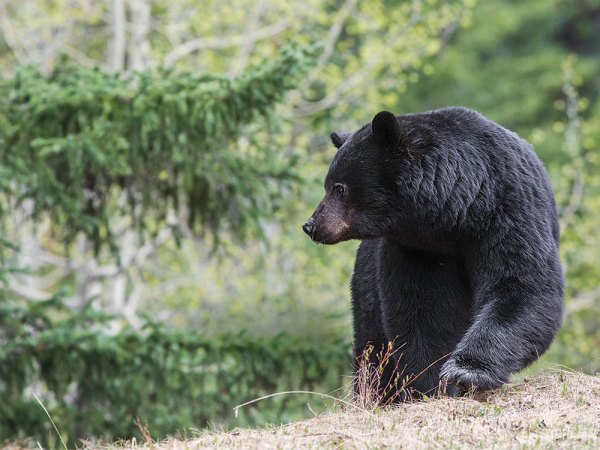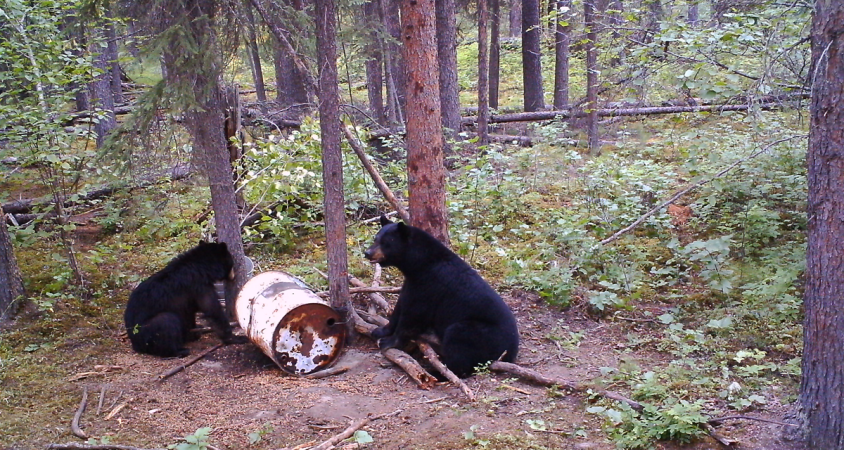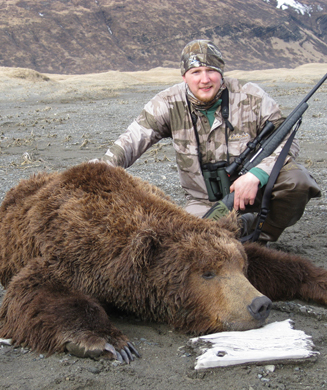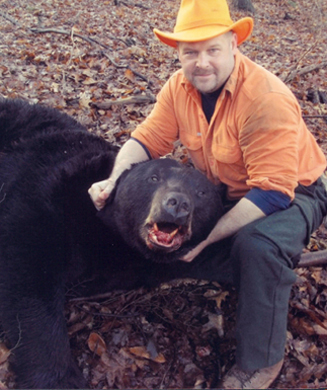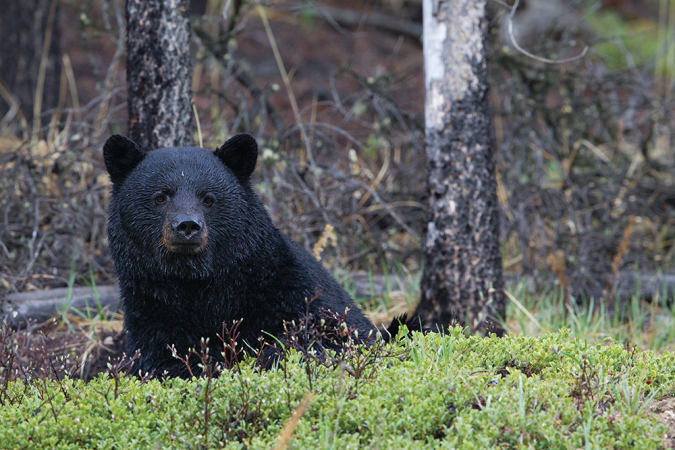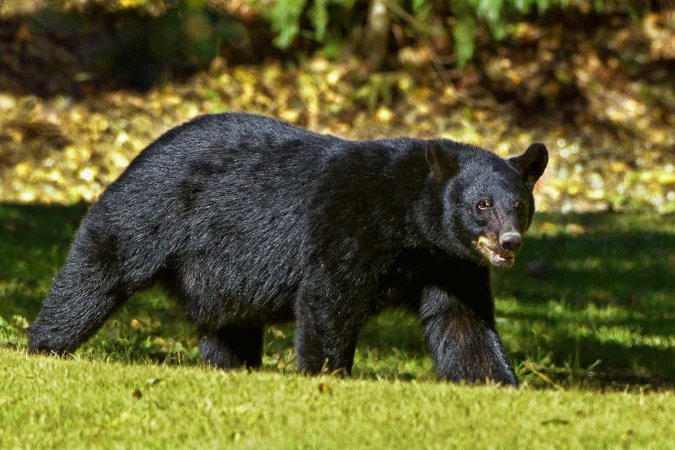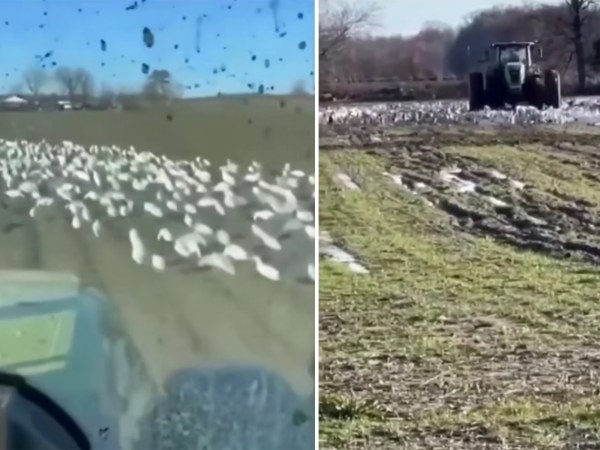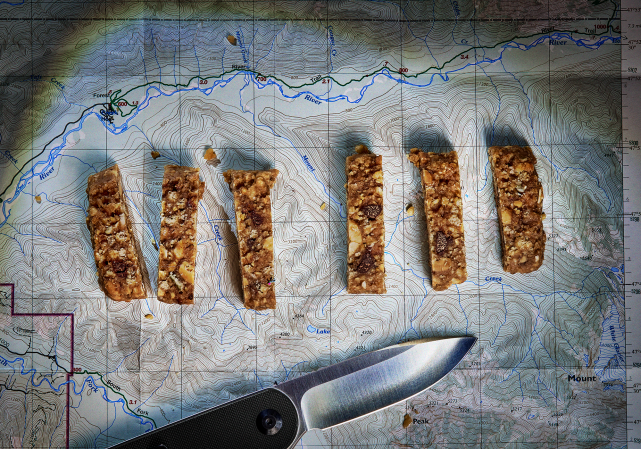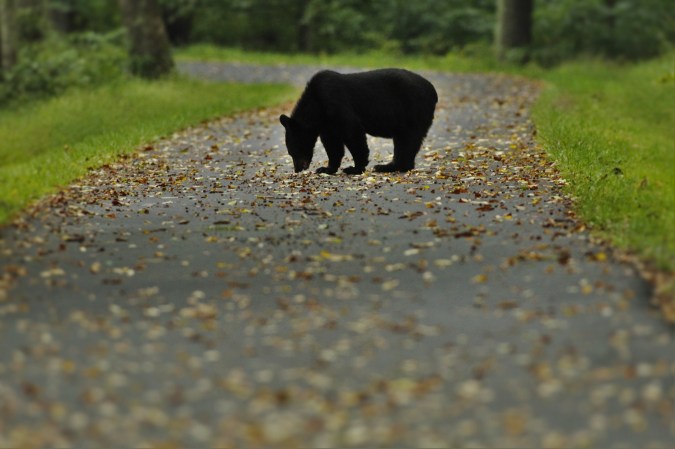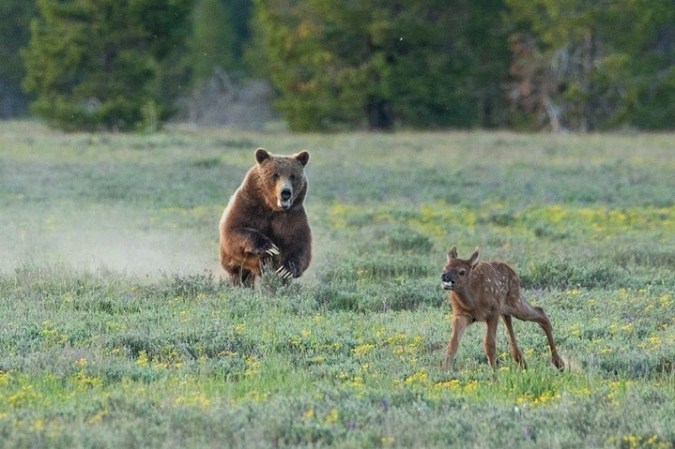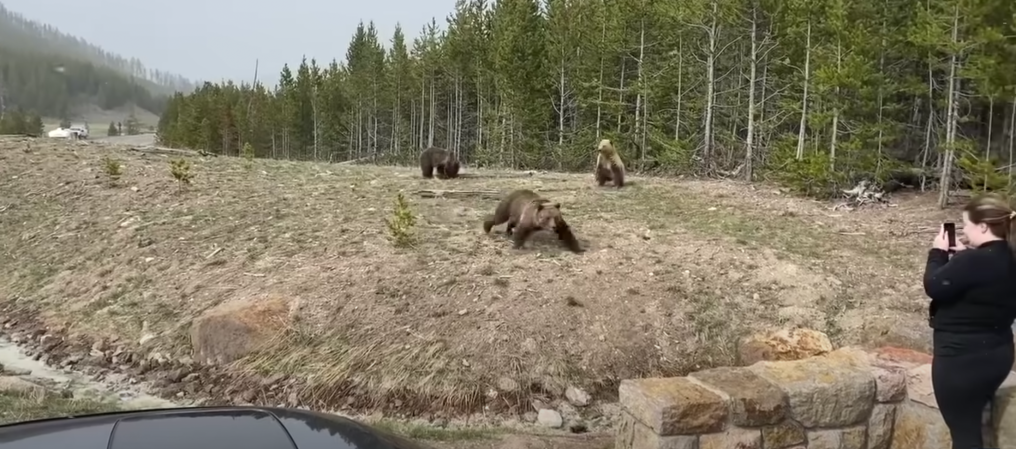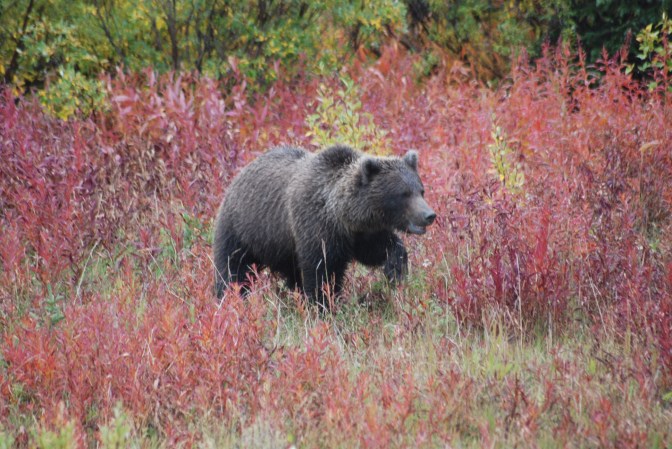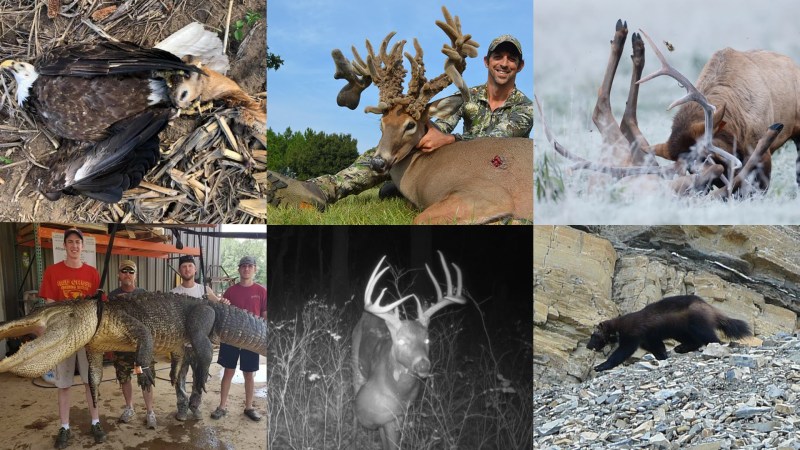When Myron Means poked his head into the den, the sow was already awake. The crevice den was cramped, and she turned away from him as he raised the dart gun.
The black bear had chosen to den in a crevice on a south-facing slope, just off an overgrown logging road deep in the Ozark Mountains. She had been pregnant when she picked this spot in the fall and raked all the leaves toward the narrow entrance for insulation. By the time we arrived in early March, her two cubs were six weeks old and growing fast.
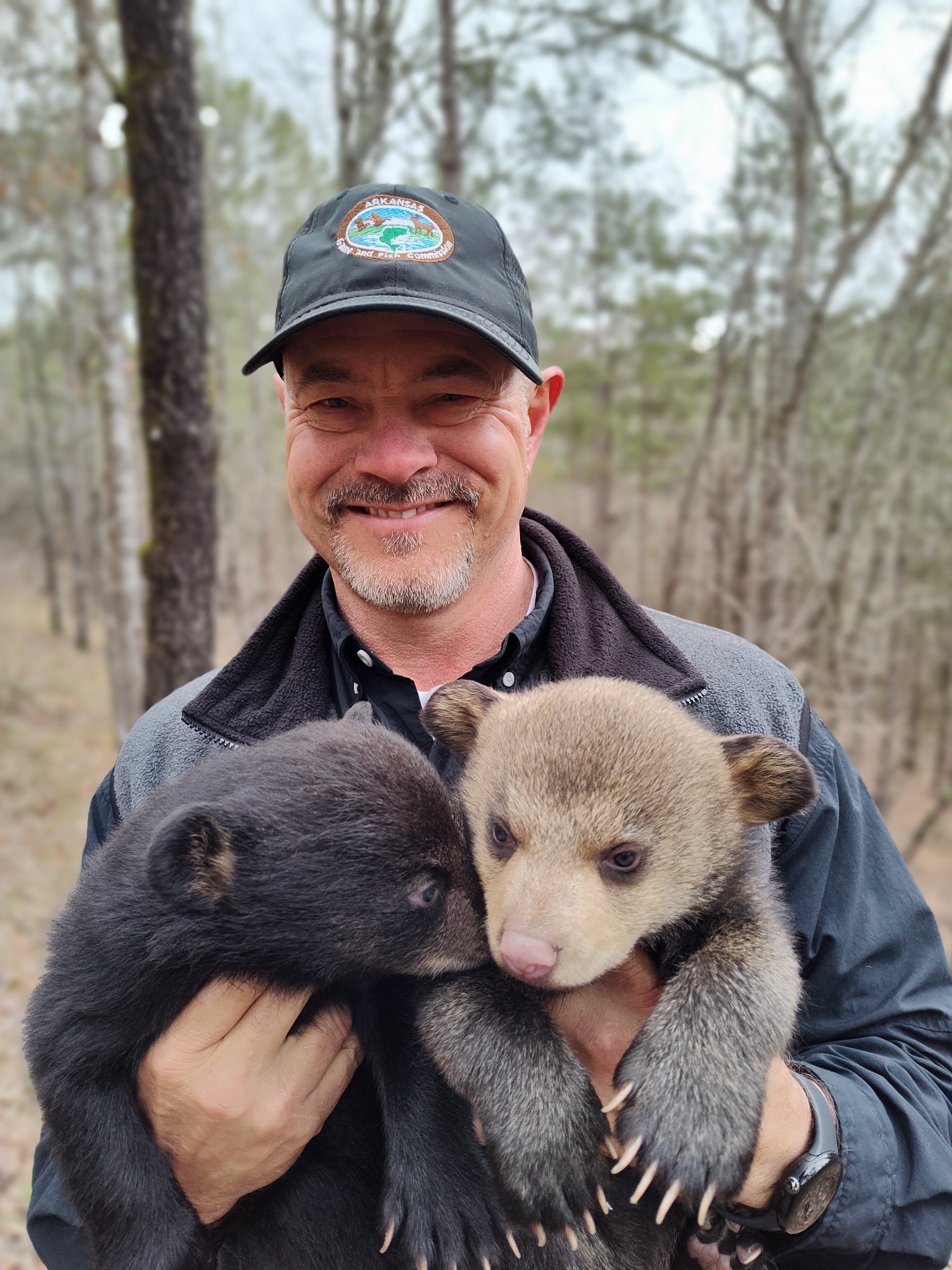
Means is the large carnivore program coordinator for the Arkansas Fish and Game Commission, and he spends more than half the year in the field studying the state’s growing bear population. During the winter months, he conducts den checks with a team of wildlife professionals to examine sows and their cubs. Den checks help biologists like Means understand the reproductive and recruitment (or survival) rates of their state’s bear populations. Den checks are also a great opportunity to educate the public on bear behavior and bust myths by answering common questions such as: Do bears hibernate?
It only took a few minutes for the anesthesia to kick in. As soon as it did, Means and his team got to work.
Where Do Bears Hibernate?
In his 27 years of studying black bears and their denning behavior, Means has found hibernating bears in all kinds of places: tucked into rock crevices and briar patches, under root balls and brush piles, inside burn piles and tree hollows. Once, he had to climb 30 feet into the canopy to dart a black bear that had denned in a rotten tree cavity so he could change her radio collar.
Bears choose their dens based on their available habitat. Arkansas black bears in the Ozark Mountains, for instance, tend to den in rock crevices. Along the White River, where winter flooding is common, black bears make their dens high in the trees. In the Ouachita Mountains, bears choose dug-out dens under root balls. In the state’s southern Gulf Coastal Plain, they often choose briar thickets. Most people, says Means, can walk right past a bear den and never even know the animal is there.
“The whole idea is the bear tries to find as small and constricted a space as possible,” says Means. “That way there’s less energy for her to heat it and stay warm.”
Bears Are Not True Hibernators
When it comes to bear hibernation, most people imagine the children’s storybook version: Bears find a roomy cave in the fall, sleep all winter long, and wake up only when spring arrives. In reality, bears are not true hibernators. But hibernation is the most common description for what bears do in the winter. Hibernation is how bears have adapted to seasonal food shortages, low temps, and nasty winter weather. It’s also when they give birth.
Hibernation is characterized by three key physiological changes: A reduced metabolism, a slower heart rate, and a lowered body temperature. Groundhogs, for example, are one of the few mammals that truly hibernate. They drop their body temperature from around 99°F to below 40°F during hibernation. Groundhogs also sleep without waking while hibernating.
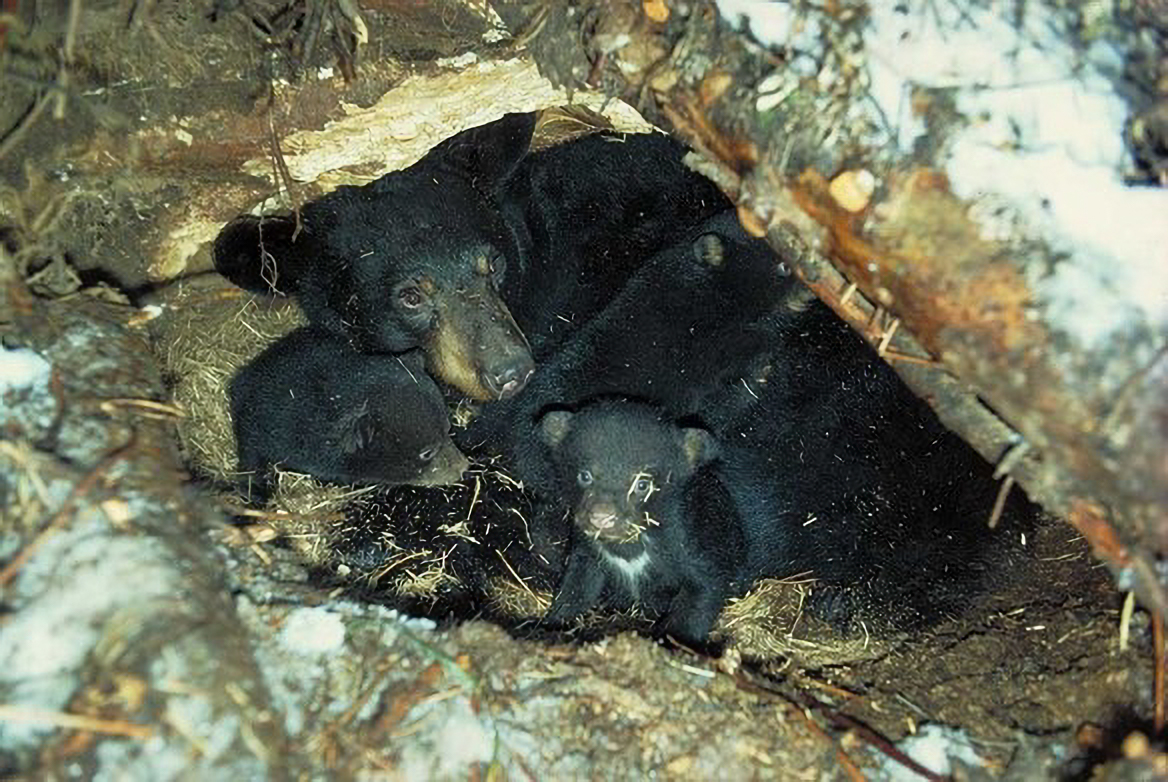
Black bears are more like estivators, says Means, which means they stay in a prolonged state of torpor or dormancy. Most of a bear’s bodily functions slow during its denning cycle in the winter—including its metabolism, respiration, and heart rate—but a bear’s body temperature only drops by a few degrees. A black bear’s body temperature hovers around 100 to 101°F in the summer; during hibernation, it falls to between 88 and 98°F, according to key research conducted in the 1980s. Similarly, a summer bear’s heart beat can range from 40 to 50 beats per minute; during hibernation, it drops to 8 to 19 beats per minute.
After Means and his team darted the sow, they checked her vitals. (While the anesthesia will affect the bear’s vitals, they’re still representative of bear hibernation.) The sow was breathing fewer than eight breaths per minute. Her body temperature was 97.8°F.
So in other words, bears sleep and are sluggish during the winter, but they don’t enter the sort of coma-like state that a groundhog does. They also move frequently in their dens. Biologists know this thanks to den checks, den cameras, and collar-tracking programs. For example: Arkansas black bears have historically been fitted with VHF radio collars. If that collar doesn’t move for four hours, it starts to transmit a mortality signal. Even during the winter, says Means, few mortality signals occur.
“Sure, if they’re undisturbed for days, they’ll sleep. A lot of times when [our] pilot flies [to check collar signals], he may hit a mortality signal,” Means says. “And then we go in to do groundwork and it’s an active signal. Yeah, bears can lay there for probably a day or two without moving in sleep [but] they’re always awake when we go in on them. They smell us, they hear us, and they wake up.”
While every animal is different during bear hibernation (Means has walked right up to a denning sow that didn’t move, while another sow on another den check ran when she heard his team approaching), this rule is true for bears across North America. Grizzlies and black bears in Alaska, for example, don’t sleep all winter long, despite longer den cycles and harsh conditions at that higher latitude.
Staying awake during den cycles could be an evolutionary response for a few reasons, says Means, including defense from predation. While most wild critters won’t tangle with a bear even when it’s asleep, male bears are known cub predators.
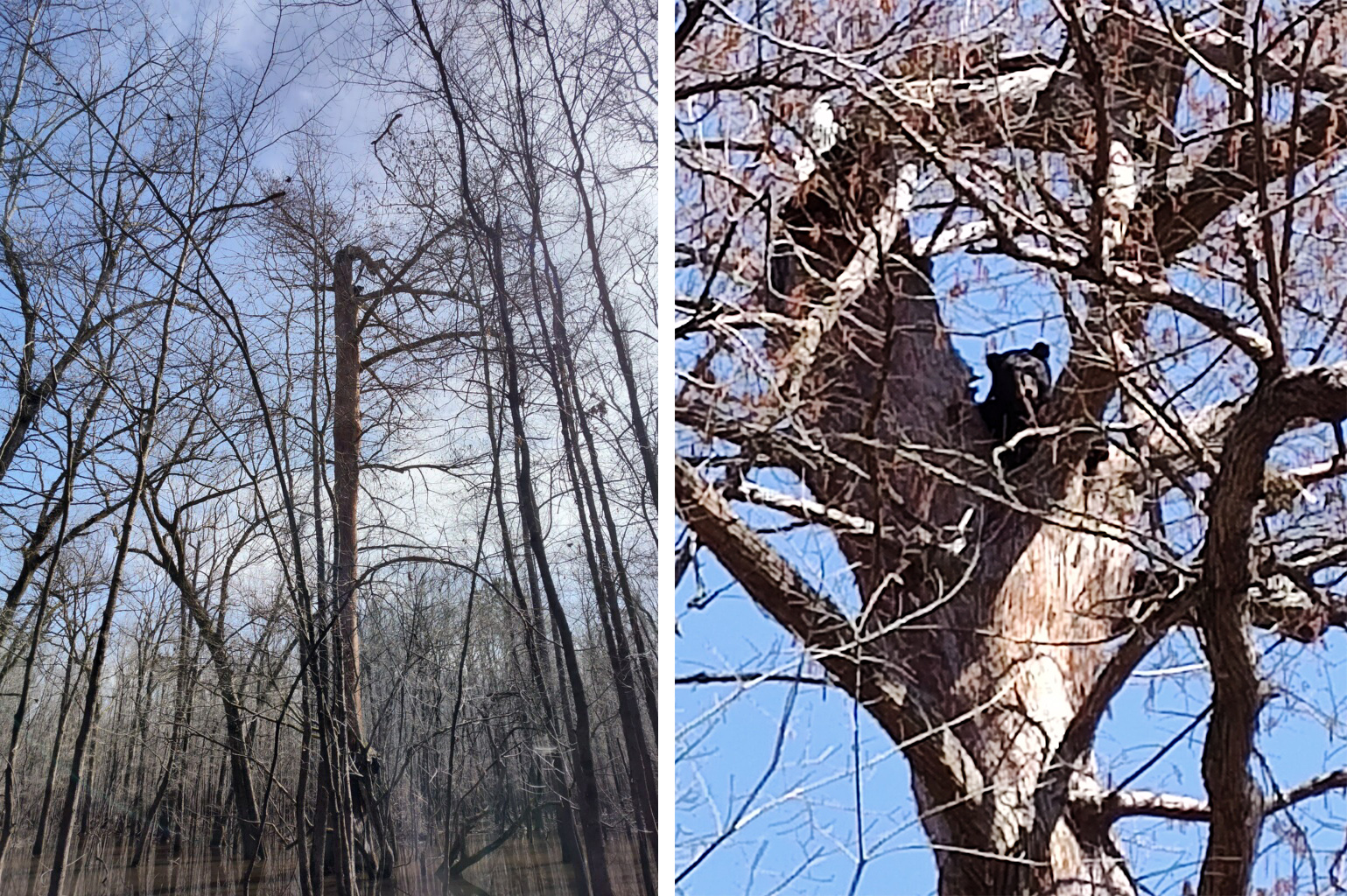
“Males will kill cubs if they have a chance to get [a female bear] to come back into estrous that spring. But we really don’t have dense enough bear populations in Arkansas for infanticide to account for much mortality. In some really high-density states like New Jersey, infanticide can account for as much as 30 percent of mortality. We don’t have densities anywhere near those states.”
When Do Bears Hibernate?
The timing of bear hibernation typically depends on latitude. The farther north a bear lives, the sooner it will enter its den in the fall and the later it will leave its den in the spring. This can last anywhere from five to seven months in Canada and Alaska. The farther south a bear lives, the shorter its hibernation period or, more accurately, its den cycle. Arkansas black bears aren’t much bothered by inclement weather, says Means, and bears in general don’t enter den cycles in response to cold temperatures or snowfall. (Means once performed a den check on a sow that was denned in the open woods. She was covered in a layer of fresh snow and her cubs were curled under her belly, warm and healthy.) Instead, food availability dictates bear hibernation.
Read Next: What Do Black Bears Eat?
“When a bear starts to go into an energy deficit, that’s when the mountain bears are going to start their denning cycles,” says Means, again referring to the black bear populations in the Ozark and Ouachita Mountains of Arkansas. “In south Arkansas, because of all the lease lands and all the deer leases, it’s just a different food dynamic on the landscape down there. Bears don’t have to go den in November because there’s still plenty of food to eat.”
As long as a bear isn’t experiencing an energy deficit (when foraging requires more energy than the forage itself provides), that bear doesn’t need to den. Even pregnant sows can wait until it’s time to give birth before denning.
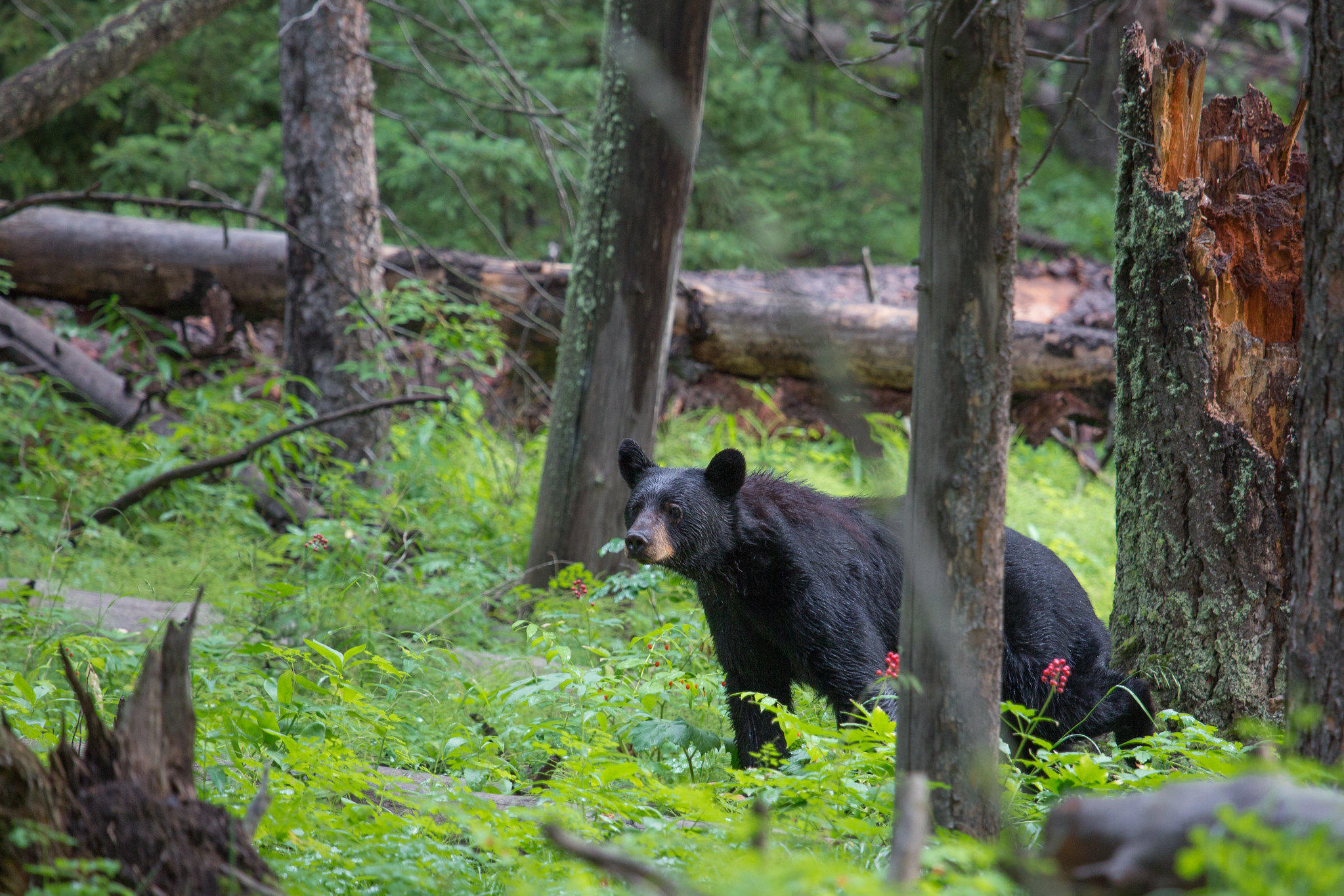
“A lot of females that we had down [in south Arkansas] that had yearlings this year never really locked down on anyplace to den. And males are the same way. Males may not even really have a den cycle in south Arkansas.”
Details on denning chronology, or the timing of when different sexes and certain females go into dens, is limited in Arkansas, says Means, but there is a definite order to when black bears begin to enter dens.
“We know that pregnant females are the first to go in,” says Means. “Females with yearlings go in after that, and then males go in after that.”
What Do Den Cycles Have to Do with Hunting Season?
Understanding when bears typically enter and exit their dens can help state wildlife agencies set hunting season dates.
“It’s kind of crazy to think but the denning chronology of South Gulf Coastal Plain bears is tremendously different than up here in the mountains,” says Means, referring to a distance of just a few hundred miles. “They den for about the same duration, but it’s much later—probably a month or a month and a half behind what our mountain bears demonstrate. That’s a big part of the equation when you’re looking at setting hunting seasons, [especially] if you’re trying to bias harvest toward males or trying to increase your harvest. A lot of bear management is [based on] when you set those seasons.”
Arkansas recently secured funding to replace some of its VHF radio collars with higher-tech GPS collars. This should help biologists like Means gain a better understanding of black bear denning chronology, which in turn will help inform the timing of the state’s bear hunting seasons.
“I used to think that, more than likely, females are going into the den sometime between early and late November based on food availability and their reproductive status. Then [in fall 2022] we had a couple really odd things happen,” says Means. “We had some females actually start a denning cycle in October. So that really kind of raised the question because a lot of our bears are translocated from northern latitudes. When we have bear season on an average year, are a lot of bears in a den cycle already? So we want to be able to capture location information and timing going into den cycles.”
That’s why Means performs as many den checks as possible across the state instead of just checking a few dens.
“It’s just a completely different dynamic down there. And really the only common denominator between how we will or need to manage those southern bears and the bears in the mountains is the fact that they’re bears.”
Because den checks during bear hibernation also provide key information on reproductive and survival rates of a state’s bear population, they can help biologists adjust harvest goals.
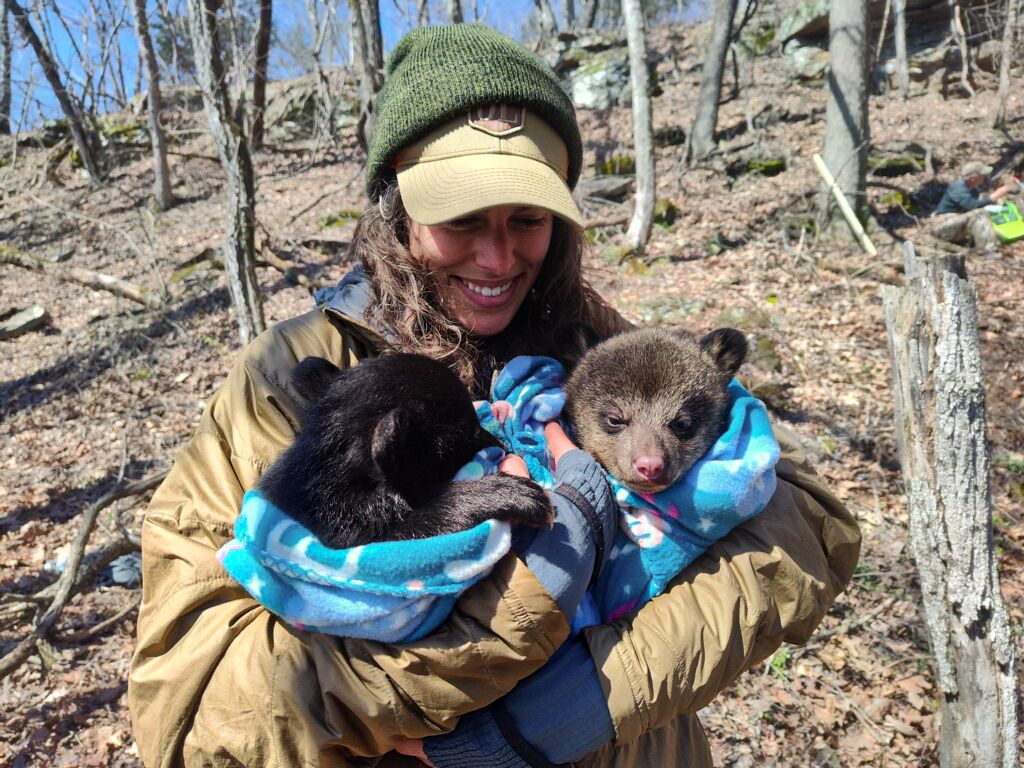
“Bears [naturally] have very low reproductive rates,” says Means. “The drought [in Arkansas] substantially affected reproductive rates. Instead of seeing 80 to 90 percent of the sows having full litters, we’re seeing about 35 percent of the sows have full litters. If you have something like environmental conditions that cause drops in reproductive or survival rates, and that happens two or three consecutive years? It’s not cause for alarm in one year, but if it happens two, three consecutive years, it would be most likely that we would adjust harvest strategies to mitigate for that drop in population.”
Bear Hibernation Facts
While Means’ team monitored the sow’s vitals and took hair and blood samples, Means set to work examining the male and female cubs. Like human infants, bear cubs have difficulty regulating their body temperature and are kept wrapped in blankets or zipped into volunteers’ coats during den checks.
Hibernating Bears Don’t Eat
During a den cycle, adult bears don’t typically eat, drink, defecate, or urinate. These normally urgent needs are suppressed due to the decline in bodily functions. Instead, bears live off their fat stores, which is why it’s so important for bears to pack on the pounds during the summer and fall. This is called hyperphagia. Newborn cubs are an exception to these rules since they nurse in the den.
“While the females are in there with the [new] cubs, for about 4.5 months there’s no eating, drinking, defecating, or urinating,” says Means. “The only thing she’s eating is cub poop for three or four months.”
Sows Give Birth During Bear Hibernation
While other big game species like deer and elk give birth to young every year, bears have a two-year reproductive process. Peak breeding season varies by location, but Arkansas sows are usually bred from May through early July.
“In the fall, at some point the sow’s body will trigger her to allow that [developing egg] to attach and she will complete a gestation period. And that’s probably about the time she goes into a den cycle,” says Means. “So she goes into a den, she gives birth in mid- to late-January, and she nurses the cubs, they emerge from that first den cycle in mid-April, when the cubs are big enough to follow, and they spend all summer and fall learning how to be bears.”
When food becomes scarcer, the sow and her yearling cubs enter their den cycle together.
“Females with yearlings might come out and forage if there’s a few acorns on the landscape,” says Means. “Typically, yearling cycles are abbreviated den cycles, and the sow may come out in late February or early March. She’ll allow her yearling cubs to hang around with her for a while, but when the breeding season begins, she’ll start her two-year reproductive cycle again.”
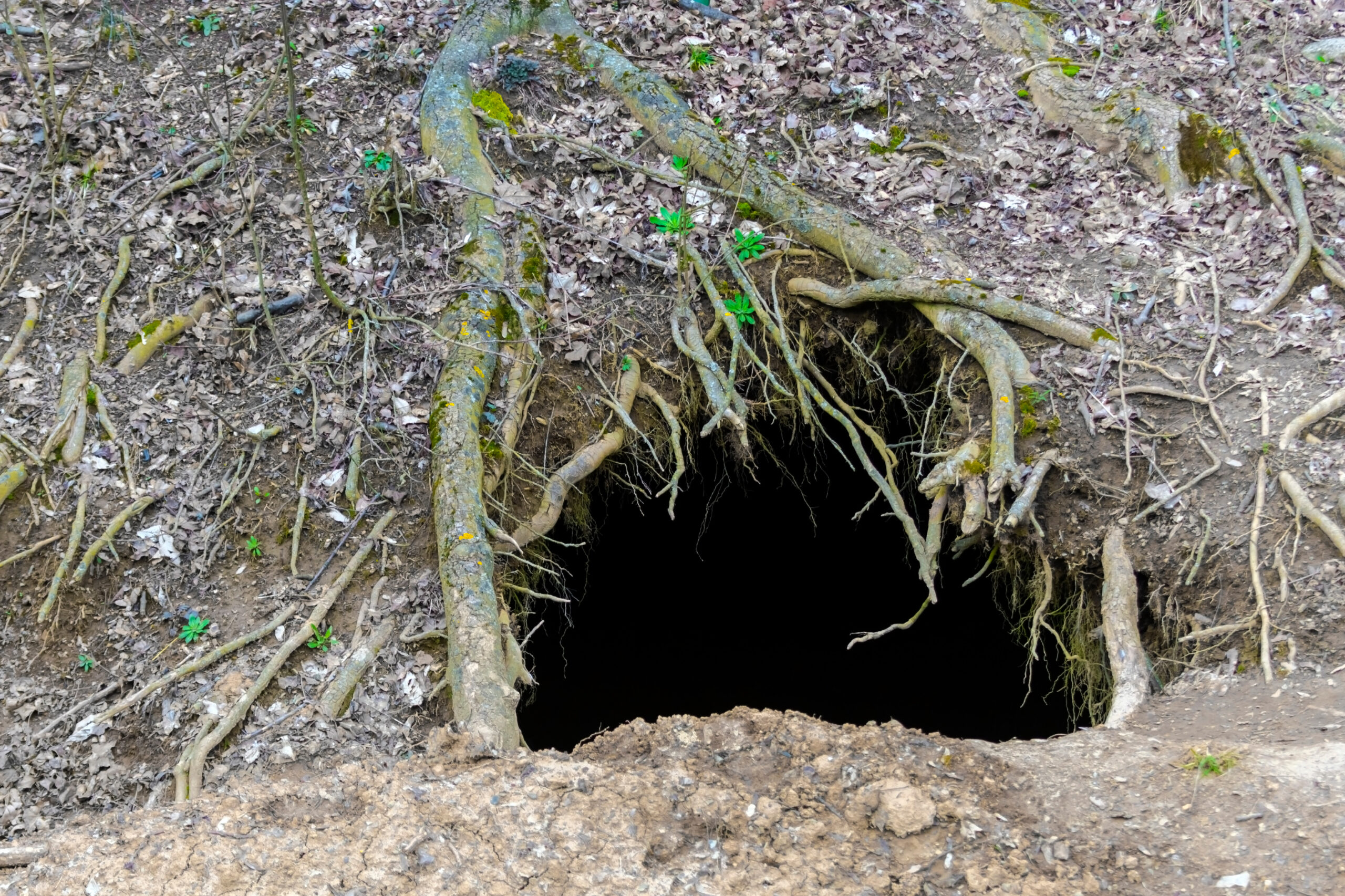
Because pregnant sows enter the den before other adult bears and they leave the den later, they have the longest den cycles. After Means and his team finished their exams of the sow and her cubs, they returned all three bears to the crevice den and reversed the anesthesia. As soon as she began to wake, we cleared out. Soon, though, the cubs will start nursing and settling down, and the sow will go back to sleep. In a few weeks or maybe a month, she’ll finally emerge from the den for spring and begin foraging again.
A sow reaches reproductive age between three and five years of age, and can reproduce into her early 20s. Once a sow stops having cubs, she’s close to the end of her natural life. Black bears in Arkansas give birth to an average of two cubs every other year, which means an average healthy black bear sow in Arkansas will birth up to 16 cubs in her lifetime.
Hibernating Bears Lose Weight
While adult bears can lose anywhere from 15 to 30 percent of their body weight during a denning cycle, they stay healthy through a variety of evolutionary adaptations. Denning bears can recycle their metabolic wastes by converting the nitrogen in their urea.
“They convert it to amino acids to feed their muscles. They can actually come out of a den cycle with more lean muscle mass than when they went in,” says Means. “I mean, how great would that be? Like, pork up all summer and say, ‘I’ll see you in a couple of months. I’m gonna go take a nap, I need to lose some fluff.’ But that’s just the lifestyle that they’ve evolved to. And they’re masters at it, no doubt.”
Final Thoughts on Bear Hibernation
It’s important to remember that bear hibernation behavior not only varies by latitude, but by habitat, too. A bear enters its den cycle based on available food and, for sows, where she is in her two-year reproductive cycle. In general, adult bears don’t eat, drink, defecate, or urinate while in a denning cycle. Hibernating bears are sleepy and sluggish, but they move often in their dens and they certainly don’t sleep all winter long.

